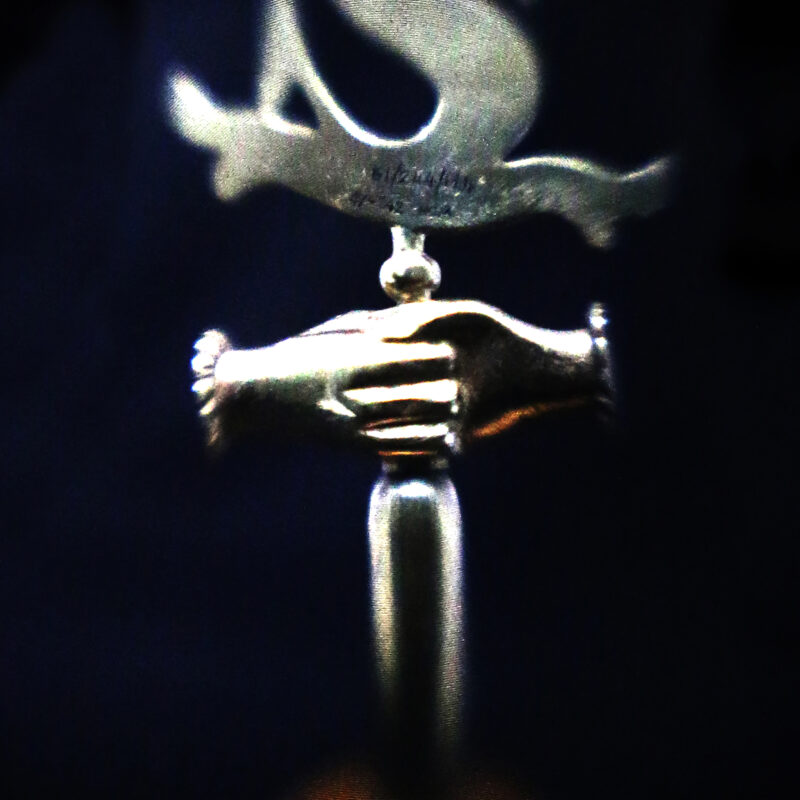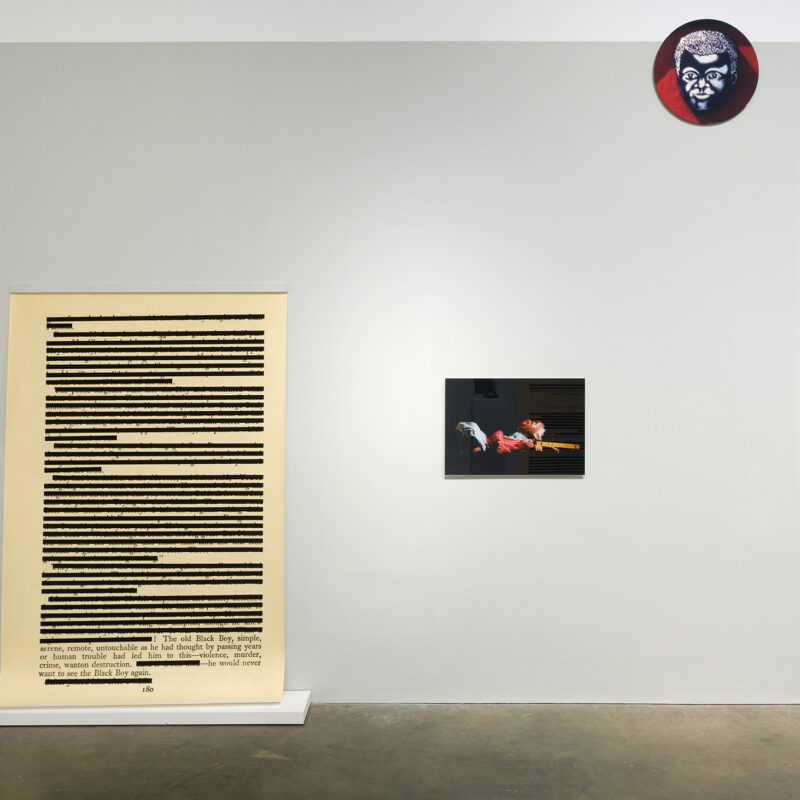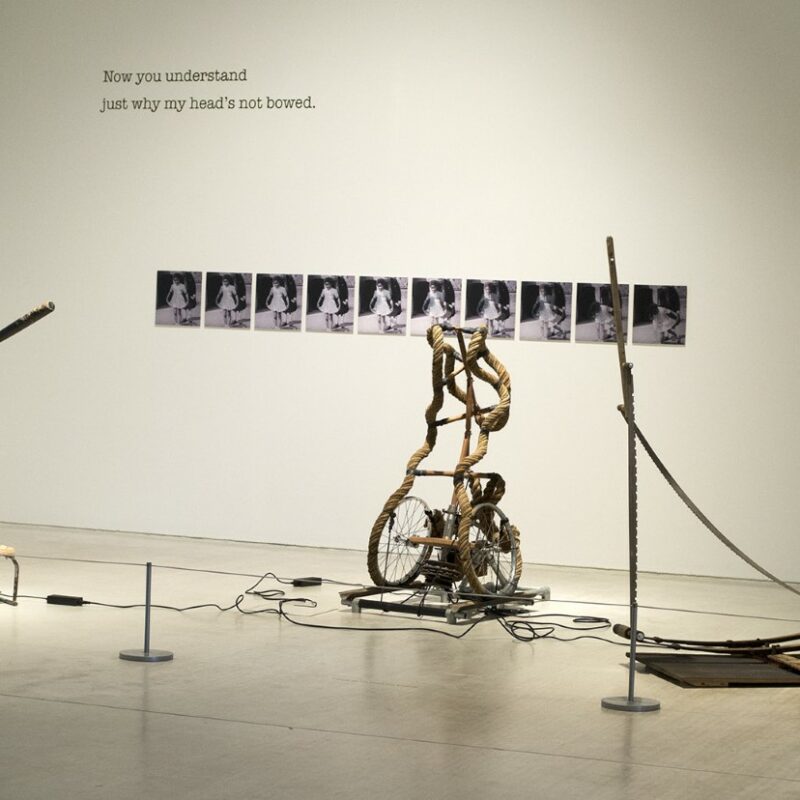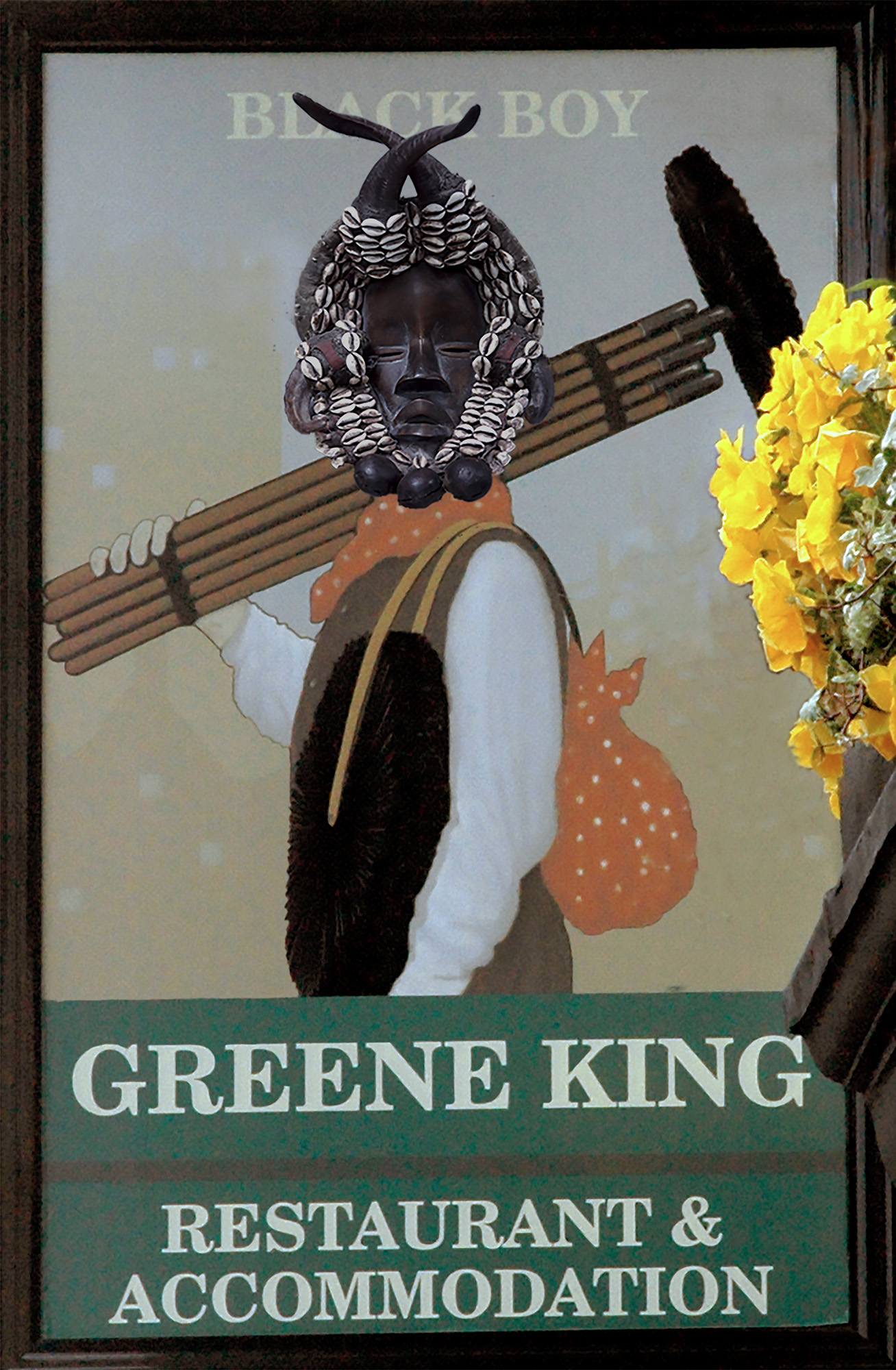there-and-then, an intervention by Ingrid Pollard
Written by Rosemary Shirley.

These multiple meanings alert us to the idea that the museum and photography, both mechanisms which are enmeshed in creating and preserving the archive moment, are also immersed in the now and the future. Ideas about objects, people and places are always in process, shifting, becoming. They are never truly fixed and understanding this can be the key to unlocking new possibilities.
Ingrid Pollard’s intervention into The Museum of English Rural Life reminds us that whilst the past conceals painful histories, creative re-imaginings can generate the seeds of repair for the future.
Pollard works primarily with photography, but also sculpture, film and sound. Throughout her career, she has explored the intersections of national identity, race and sexuality, often placing these subjects into dialogue with landscape and place. This year she has been nominated for the Turner Prize for her solo exhibition Carbon Slowly Turning at MK Gallery and Turner Contemporary.

For there-and-then, Pollard researched and responded to the collections at The MERL, focusing on the museum’s large collection of friendly society pole heads. Friendly societies were rural welfare unions, based within village communities, they acted locally to improve the working and living conditions of their members. The decorative pole heads take the form of symbols of solidarity and rural labour, they were used as part of the friendly society parades which brought people together to promote and celebrate their activities.
Pollard has made a series of banners that are suspended within the museum space. Each one features a camera obscura photograph of a pole head, combined with fragments of text that echo words taken from For Space by the geographer Doreen Massey, Together: The Rituals, Pleasures and Politics of Cooperation by Richard Sennett, and the collection of poems M Archive: After the end of the world by Alexis Pauline Gumbs.
Place is precisely that throwntogetherness, the unavoidable challenge of negotiating a here-and-now.
Doreen Massey
This text comes from Doreen Massey’s For Space. Pollard combines it with an image of a pole head showing an axe and an ads, tools used by rural workers, thrown together or crossed in solidarity. The text reminds us that it is from an often temporary coming together of different elements, people, geographies, interests and negotiations that places emerge. A complex interweaving of here-and-now, there-and-then.
The throwntogetherness of things can be a powerful tool for imagining new possibilities. Pollard’s work often combines text and image, two different languages brought together sometimes pulling in altered directions. The art critic and writer and Lucy Lippard noted the potential of this action in her writing on collage. She asserted that the process of putting this up against that, the juxtaposition of two different realities, creates the conditions for new ways of thinking to emerge.

Pollard’s images allow us see these museum objects in a different way. Freed from the museum display or the catalogue record, the pole heads float on the transparent material of the banners, removed from context, falling into and out of focus without scale or mooring. They are mysterious symbols, both strange and familiar: hands and hearts, a disembodied horse’s hoof, a strange sea creature. This too is another language that is not always legible, its meaning is not fixed.
The images do not function as illustrations of the texts, and the texts are not explanations of the image. Rather, they create a play between languages, a cumulative effect, a web of complex yet simple messages around the role of and the need for community, connection and cooperation.
Wandering the museum’s rooms, the visitor never forgets its painful history, yet this memory is not closed, self contained. Cooperation is not like an hermetic object; once damaged beyond recovery.
Richard Sennett
This text fragment comes from Richard Sennett’s Together and seem appropriate for an artwork made for a museum. But contrary to the quote, wandering through the sealed glass cabinets and the carefully designed displays of the museum, it can indeed be easy to forget its painful history. Like beautiful pieces of jewellery, the pole heads—miniature, intricate, wrought in polished metal—are symbols of resistance to the violence and pain caused by the inequality of land ownership and rural labour relations.
Pollard’s work is often engaged in bringing these hidden histories to the surface. One of her most well known works, Pastoral Interlude, connects the histories of the English countryside with the wealth accumulated through the transportation, labour and sale of enslaved people from Africa. Her work Seventeen of Sixty Eight creates an archive of street signs, pub names and fragments of literature which feature the image of the black boy, signalling both the long historical presence of black people in the UK but also the ingrained racism expressed through these representations.

This text is combined with an image of hands clasped in support, agreement or welcome. Together they speak of the possibility of repair through connection and cooperation.
she built it out of scraps she found on the road. the rubber of blown- out tyres. the dented metal mementos of how fast everything seems to move, almost as if it had all wanted to rush to the end.
Alexis Pauline Gumbs
Alexis Pauline Gumbs’s vision of a post-apocalyptic future tells of a researcher piecing together evidence of life in a late capitalist world wracked by inequality, anti-blackness and environmental collapse. This text is paired with an image of a pole head in the shape of a horse’s hoof, a strange fragment, a worked metal memento. However, in the midst of this devastation we learn that the re-construction is possible: ‘she built it out of scraps’.
In there-and-then, Pollard herself becomes the researcher, piecing together scraps of evidence from a former world to aid us in the repair of this one. The friendly societies re-imagined in this work evidence the power of local action to create positive change showing that it is cooperation, community and love that will help us survive.
Explore there-and-then
there-and-then is currently on show in the Wagon Walk at The MERL. Find out more about the installation. We are delighted to be extending its run in the museum beyond the initial end date to 22nd December 2022.
Rosemary Shirley is Associate Professor of Museum Studies at the University of Leicester.
